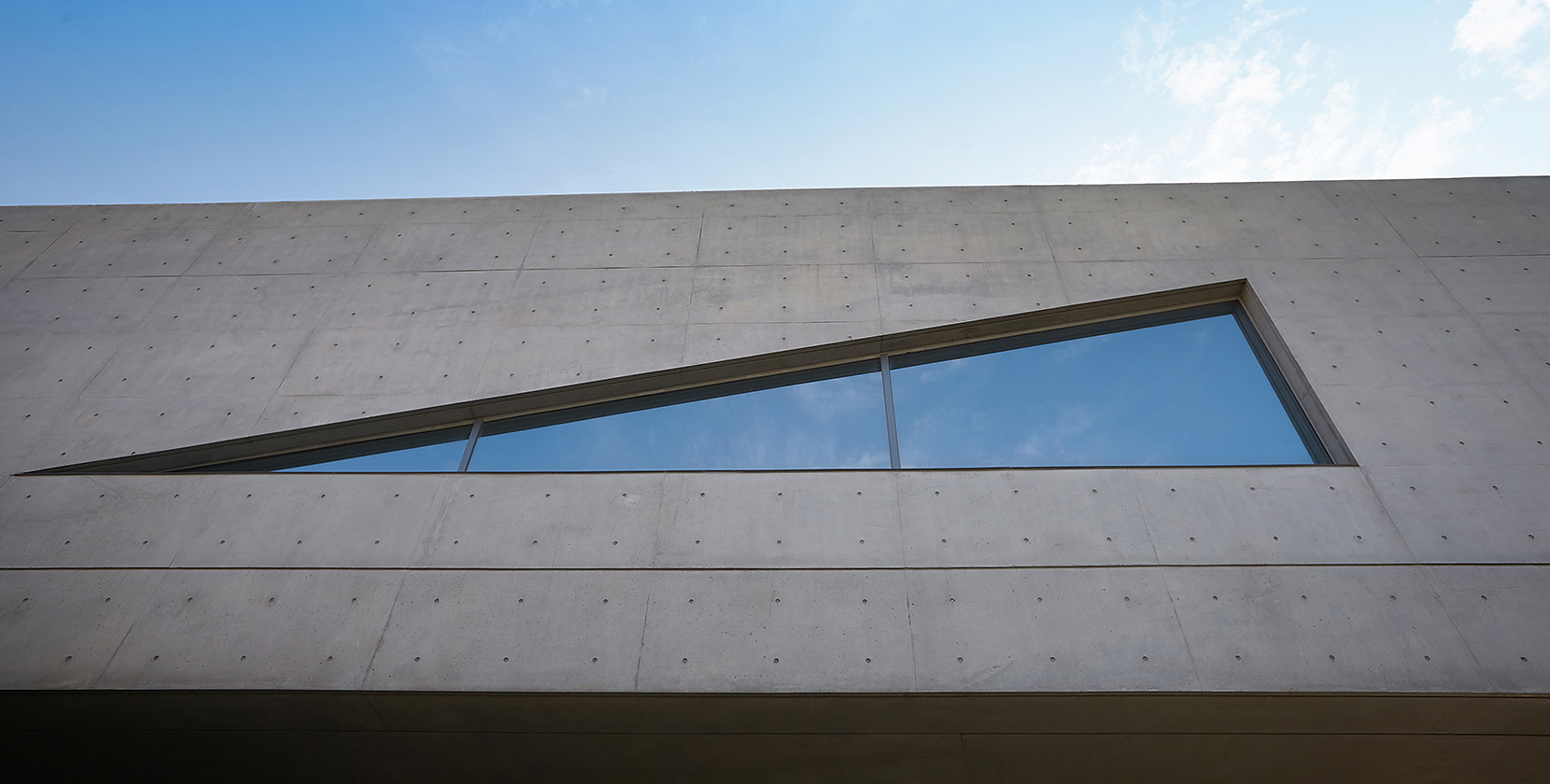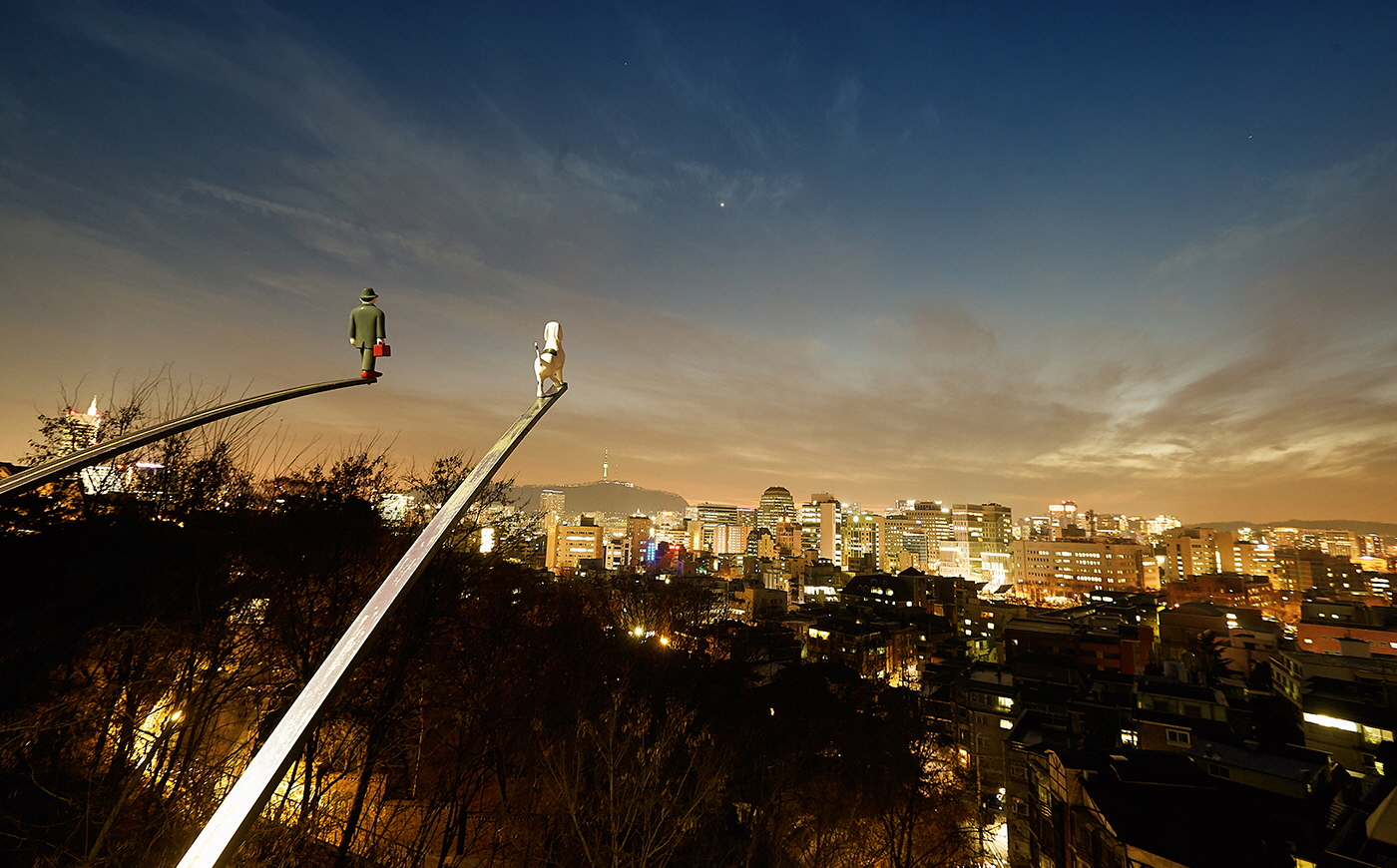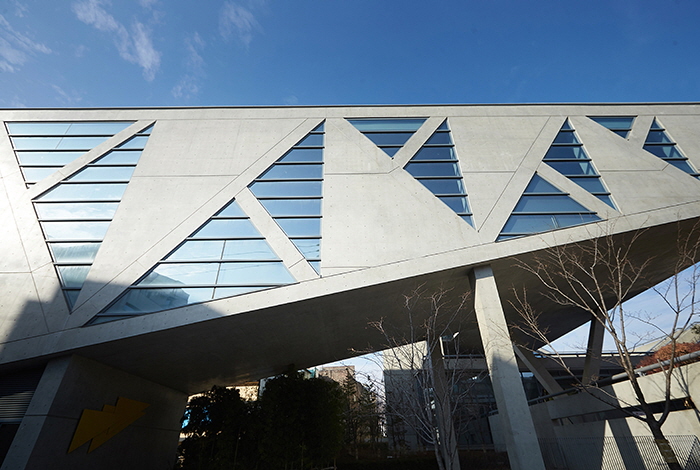
The Junction of Education and Culture
The center of Seoul has a path of traditional culture from Gyeongbokgung Palace to Changgyeonggung Palace, and Daehangno Street filled with youthful and experimental modern culture. These two streets are now connected by a new route of culture with the Jaeneung Culture Center, opened in Hyehwa-dong, Jongno-gu, Seoul, in October 2015.

New Space Connecting Tradition and Modernity
Seoul is known for its scores of newly built skyscrapers, but the district around Hyehwa-dong still has a touch of old times.
Low buildings and narrow streets have long completed the landscape in the area.
Also, Hyehwamun Gate and its neighborhood area retain the legacy of Korea's history.
As a business specializing in education, JEI Corporation wanted to create a new path of culture
that embodies both traditional and modern culture and decided that the best architect to design buildings in harmony
with the urban landscape would be Tadao Ando, a renowned Japanese architect.


Alongside the short uphill road from Hyehwa-dong police stand to Hyehwamun Gate,
two constructions designed by Tadao Ando are standing like two brothers.
JCC (Jaeneung Culture Center) is a performance hall dedicated to classic music programs
and JCC Creative Center is a research and development facility.
These two buildings are often called JCC together.
Although they are the newest addition to the neighborhood, they seamlessly mingle into the landscape.
This is partly because the district unit planning restricts
the height of buildings to preserve the landscape of the historical Hyehwa-dong area.
A more significant factor, however, was the architect's efforts to make his buildings harmonize with the existing constructions.

Tadao erected the two buildings by using exposed mass concrete, an economic and
efficient material, and supported them with a V-shaped central pillar.
A number of diagonal lines found both inside and outside the JCC buildings were designed to coincide
with the angles of the road heading toward Hyehwamun Gate, thereby creating a seamless harmony with the neighborhood.
All roads are characterized by a ceaseless flow from one place to another.
Designing its buildings based on the concept of “road,” JCC endeavored to place the buildings
within the continuously flowing road and create a harmony with the unique atmosphere of the neighborhood.
The buildings were also designed to allow anyone walking through the alleys in Hyehwa-dong to access the inside of JCC.
A large number of windows in the buildings highlights that this place is not an isolated space, but a space for communication.
Two Brotherly Constructions
One corner of the ground floor of the JCC building has spiral stairs leading to the underground concert hall.
Visitors take one step after another through the spiral staircase with building excitement for the performance.
The spiral structure makes the visitors stay a little longer within this space, enhancing their expectations for the show.


The concert hall features a variety of scientific elements.
Irregularly connected pieces of wood with different thickness cover the walls.
Unlike the concrete used for the exterior, the wooden texture delivers warmth and coziness
and creates a calm feeling of being inside a large cradle.
The wooden walls enrich the sound of musical instruments played inside this hall.

Since the sound waves hit the wooden walls to make the music sound rich
and complete everywhere, all seats can be considered the best.
The sound during a performance is almost completely shielded so that the neighbors are not disturbed.
The short walls installed with a series of long wooden bands in the center of the walls
help the audience upstairs enjoy the performance more comfortably.

Unlike the JCC building, JCC Creative Center is equipped with linear staircases.
Since this space houses offices for employees, the flow of traffic was designed
to be as simple as possible to focus on the practical use of the space.
The building's rooftop offers a vast view over the low buildings in Hyehwa-dong.
The spectacular landscape is completed by the faraway Mt. Bugaksan, Mt. Inwangsan,
and Mt. Namsam, all of which are part of Seoul's most-loved natural landmarks.
This appears to be a perfect place to make creative ideas.
Tadao Ando intended to deliver a message that the two buildings were brother-like structures facing each other.
It is interesting to find the similarities and differences between the two buildings.
The diagonal lines embodied by the entire construction and the rhythmic layout of triangle windows
express the unique identity of JCC, while maintaining the harmony with the surrounding environment.
Naksan Park Offers a Magnificent View over Seoul
The road from JCC leads to Daehangno Street, the space known for modern culture,
and Naksan Park is a must-visit destination in the neighborhood.
The park offers a vast view over downtown Seoul and is renowned for the beautiful views of sunrise and sunset.
Naksan Mountain has been known as one of the guardian animals in Feng Shui.
The entire mountain is made of granite and is often called “camel mountain” because its silhouette resembles that of a camel.
A large part of the mountain was destroyed during the eras of Japanese colonial rule, and it later had another
calamitous experience of being abandoned due to reckless urban planning in the process of modernization.
Eventually, the Seoul government designated the mountain
as a neighborhood park and launched a project to connect the park with the neighboring green areas.
Thanks to such efforts, the park is now beloved by both professional and
amateur photographers who take pictures of Seoul viewed from Naksan,
as well as visitors of all ages who want to enjoy the spectacular nightscape of the capital city.
Presenting a unique landscape combining the bustling scenes of Seoul and the historic fortress,
Naksan Park has frequently appeared in a number of television series and films.
The fortress stretching from Hyehwamun Gate to Naksan Park performed its functions
for a longer period than any other extant fortresses in Korea.
Walking alongside the path of the fortress, visitors living in this modern era of uncertainty
and volatility may be inspired by the remains that have weathered numerous hardships over many years.


The artwork of a man holding a briefcase and a dog continue to attract visitors as well.
Walking into the vast sky, the sculptures appear to be heading along an illusory path
or taking a step into the hopeful future, depending on the perspective of viewers.
Hyehwa-dong is a district that connects tradition and modernity, history and culture.
Situated in the heart of the neighborhood, JCC transcends existing stereotypes
through its scientific elements and delivers creative inspirations.
With the modern features against the traditional setting,
the buildings appear to embody the well-known phrase “Review the old and learn the new.”








